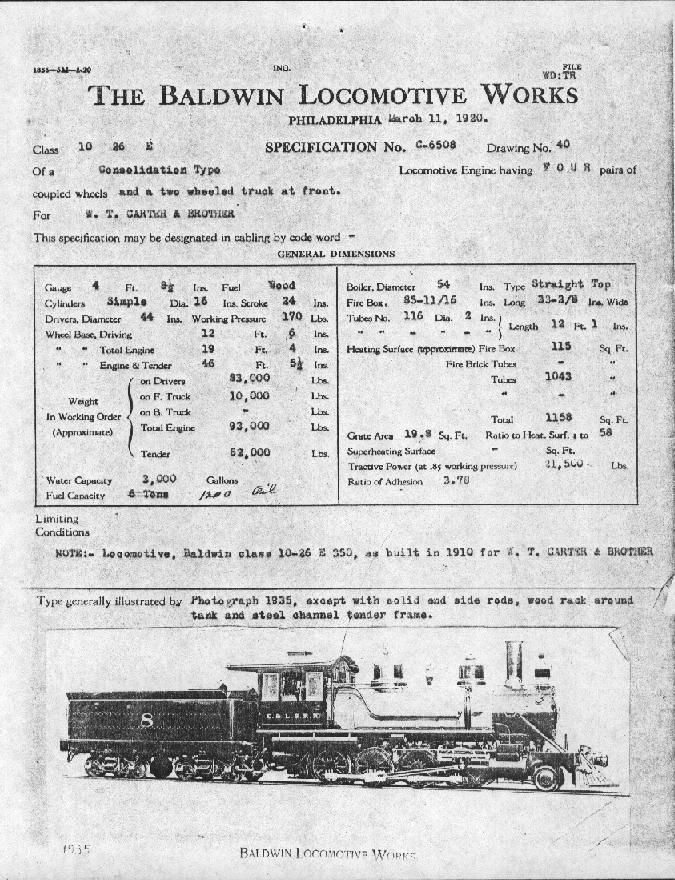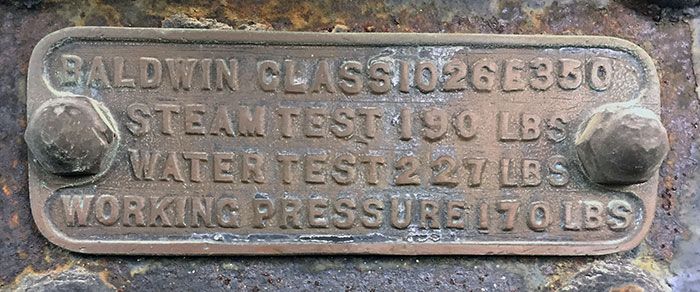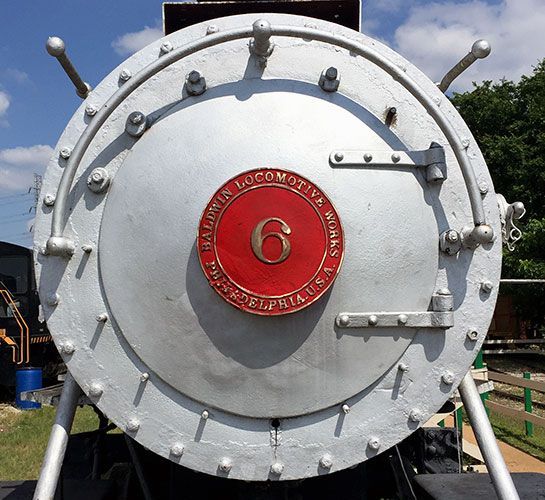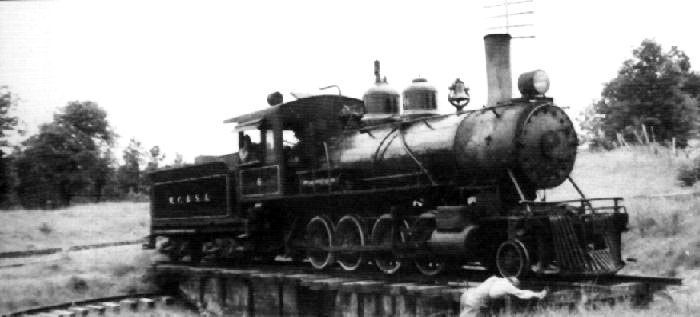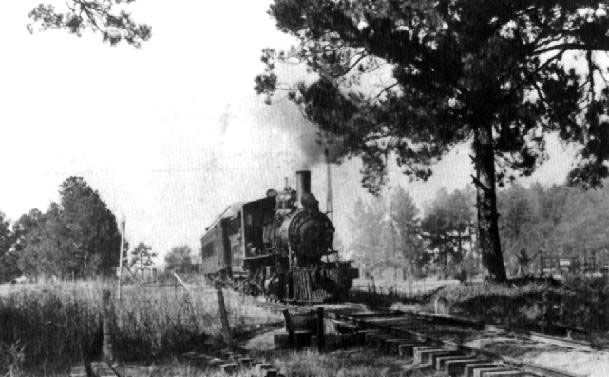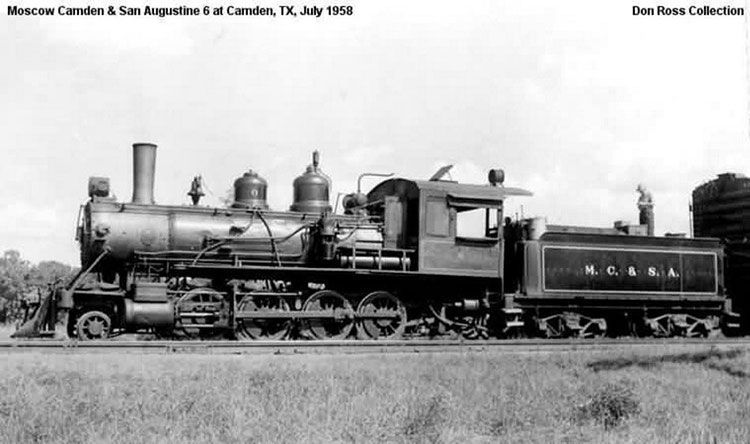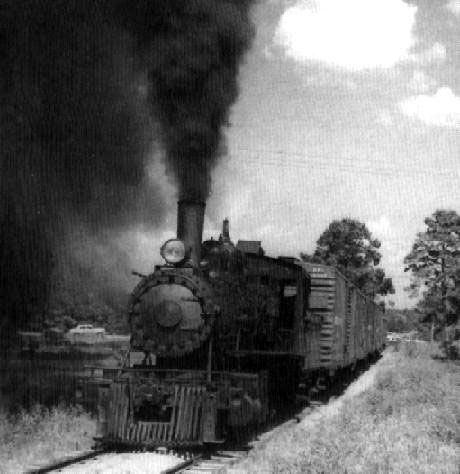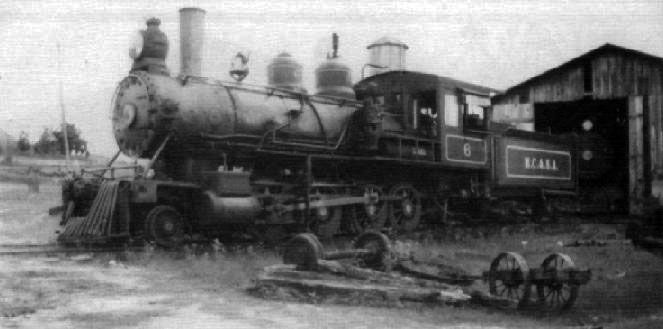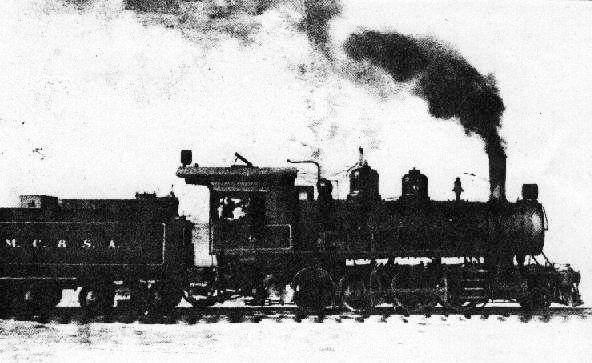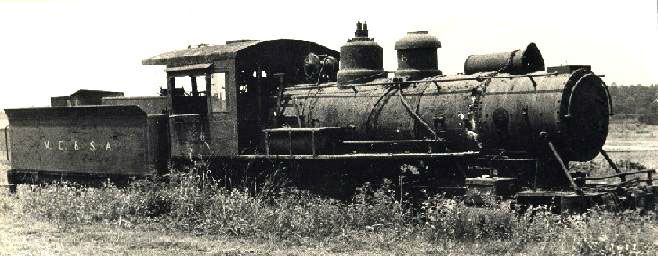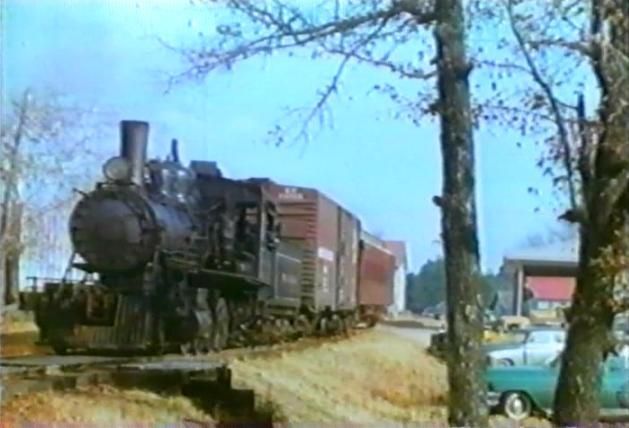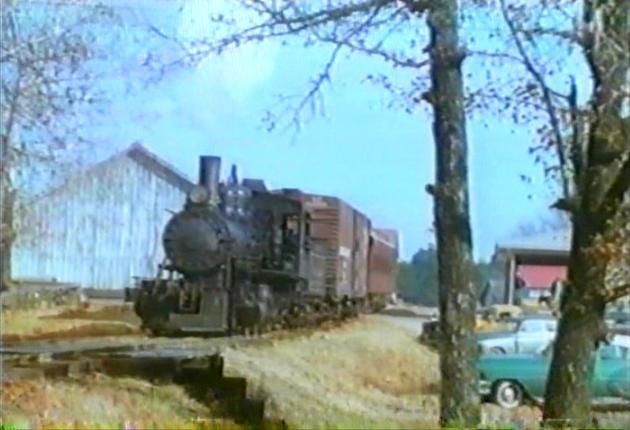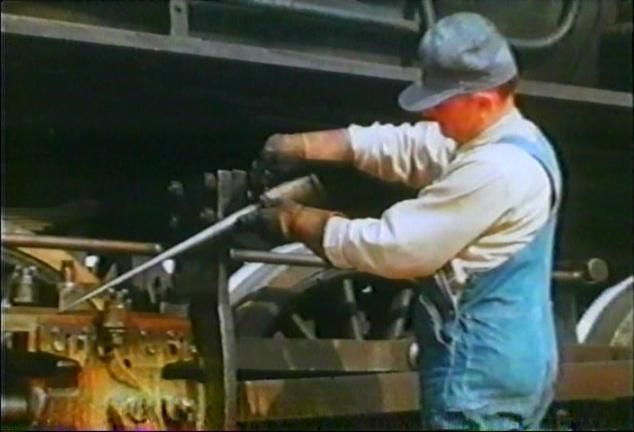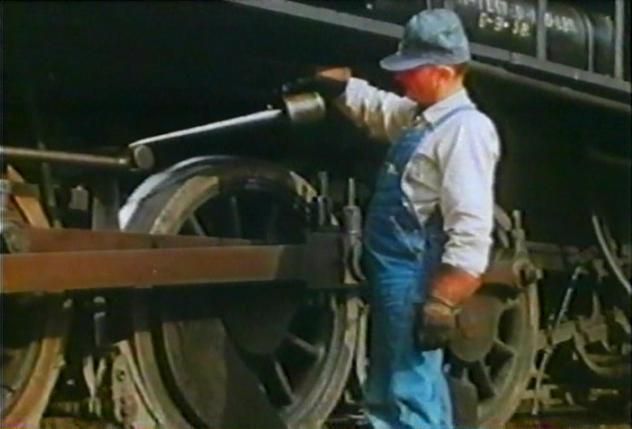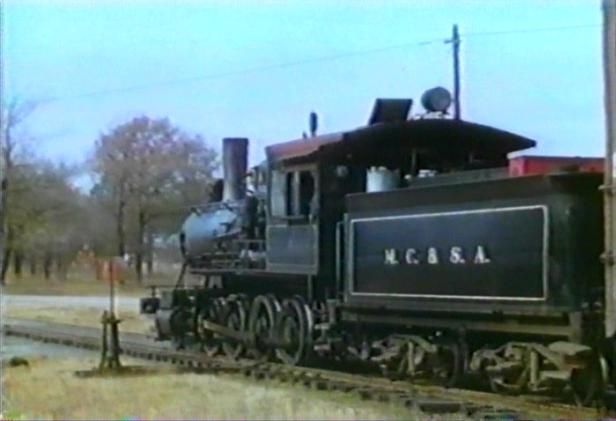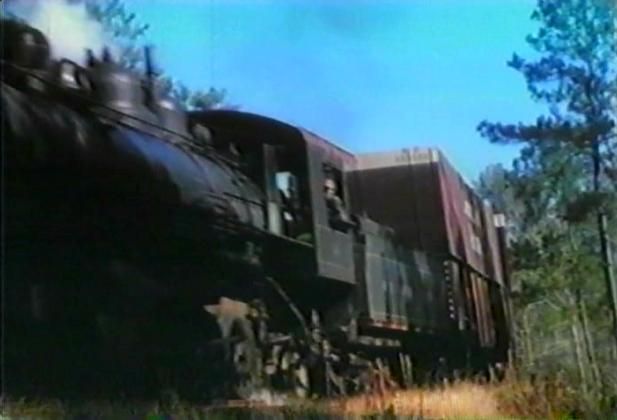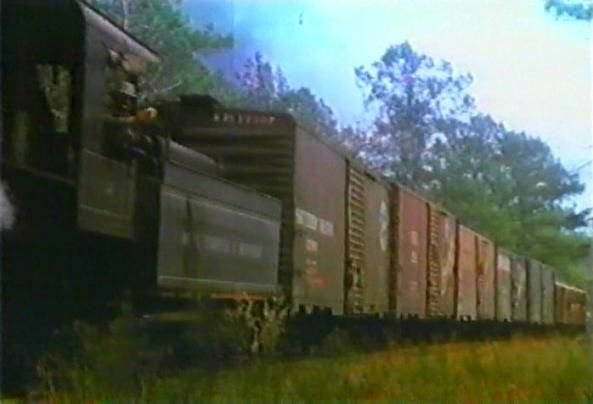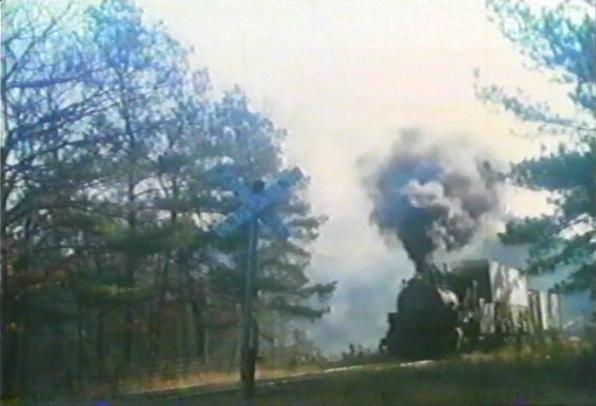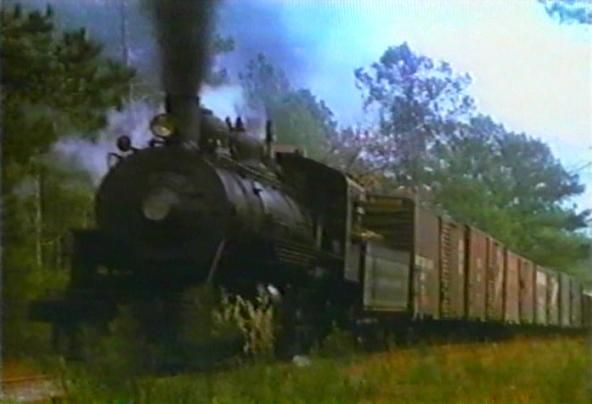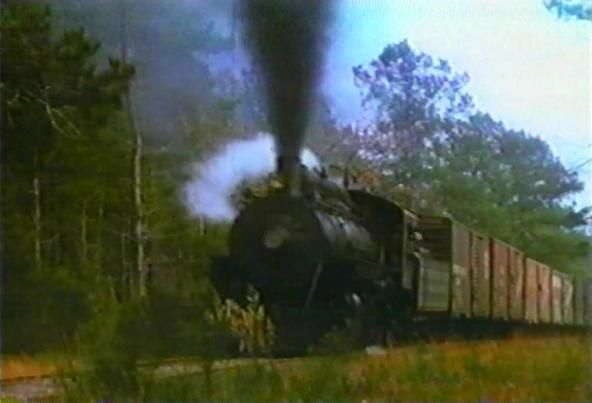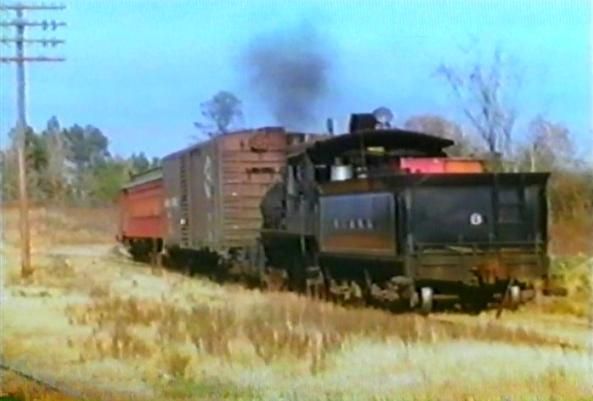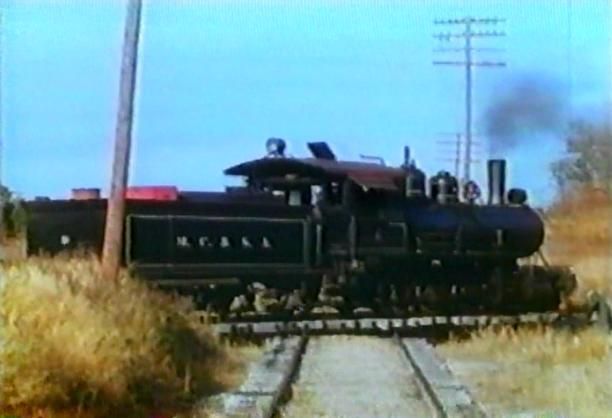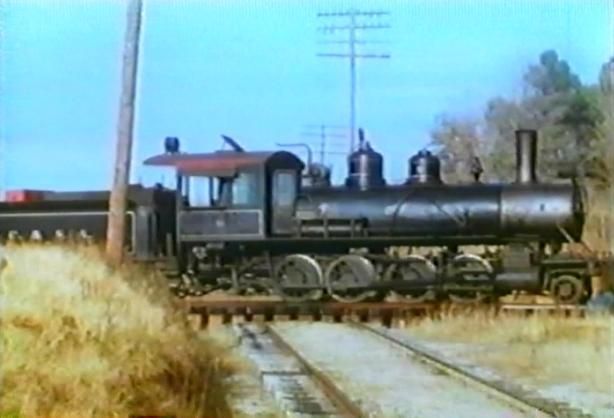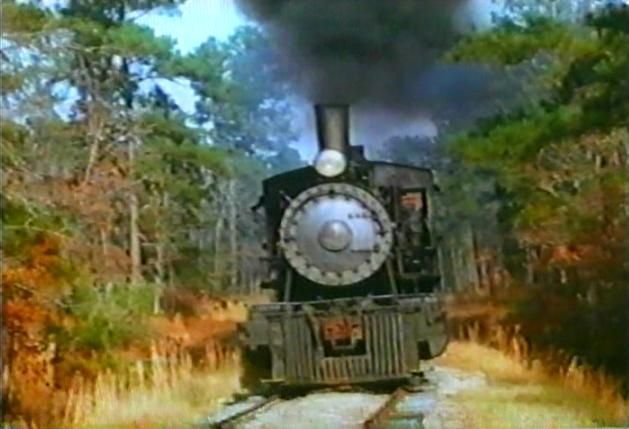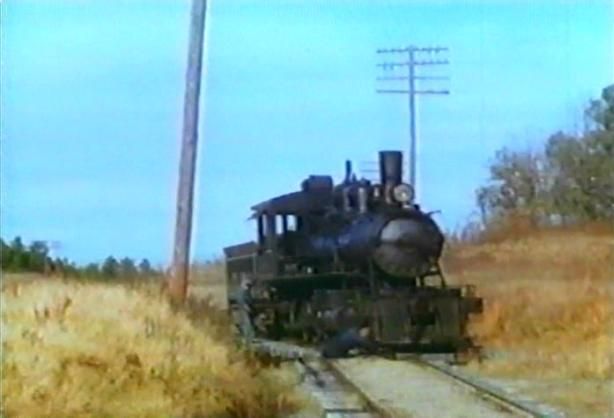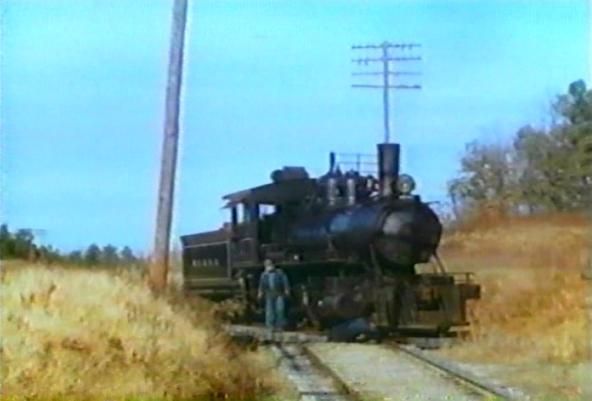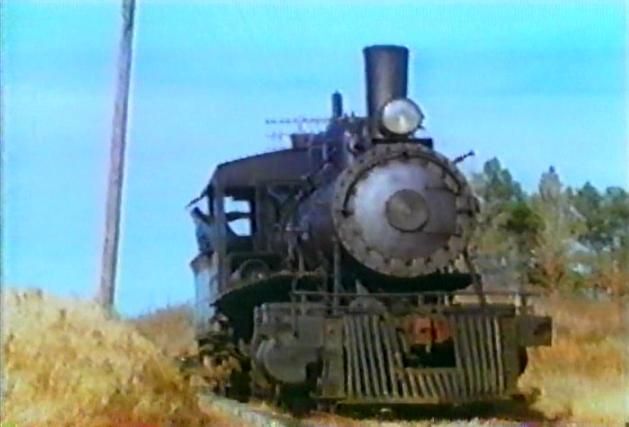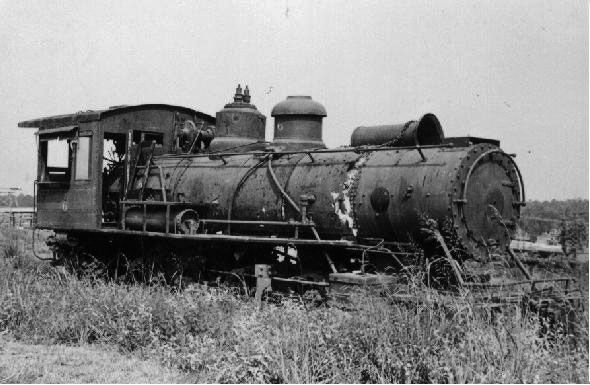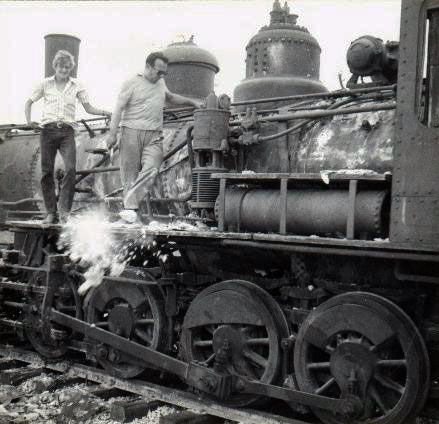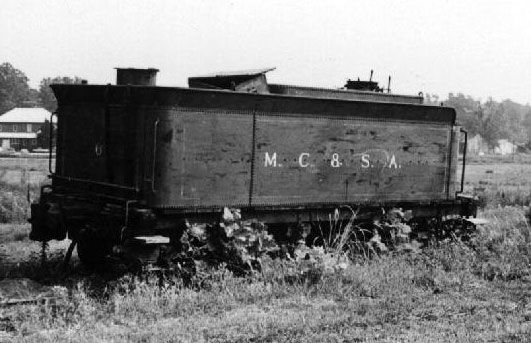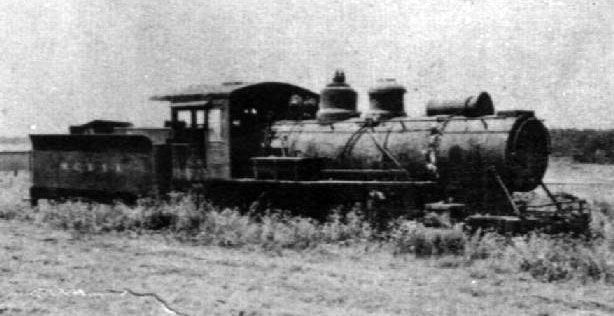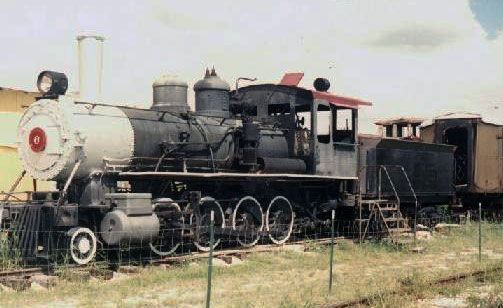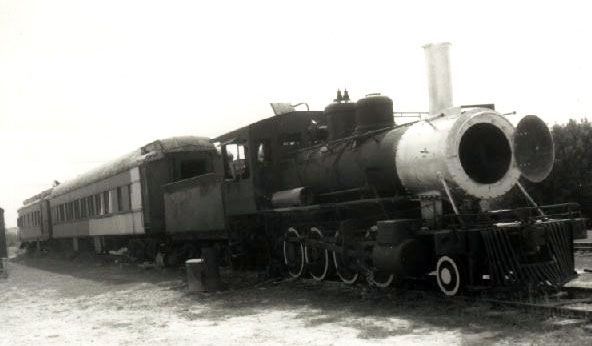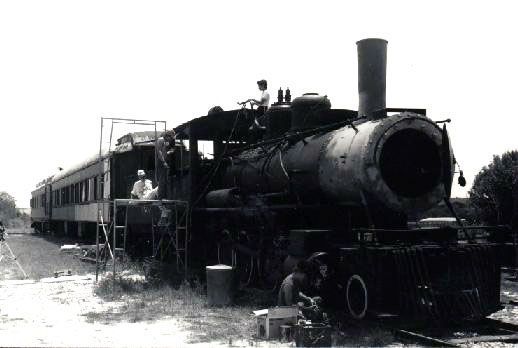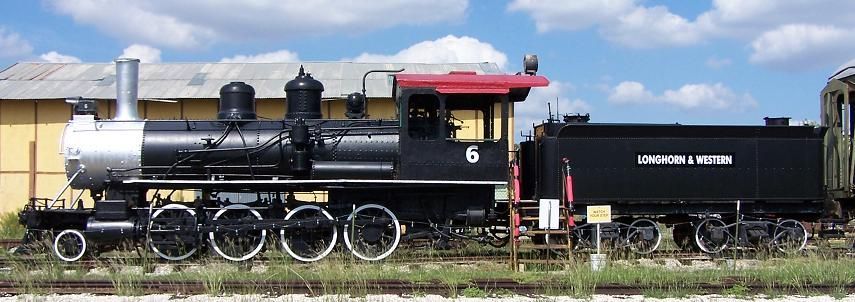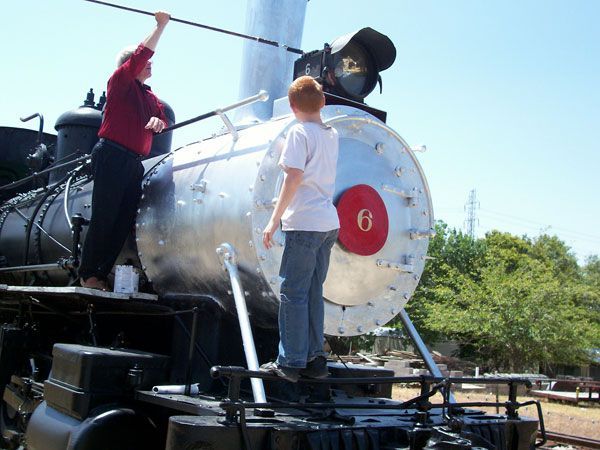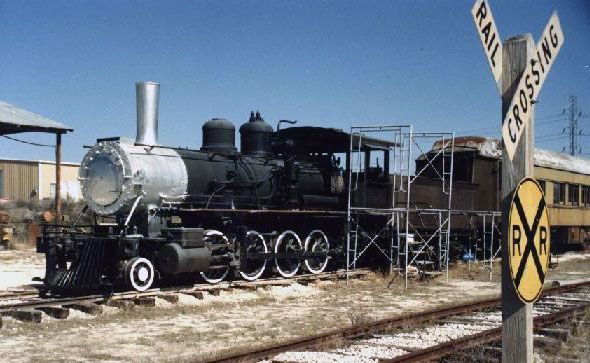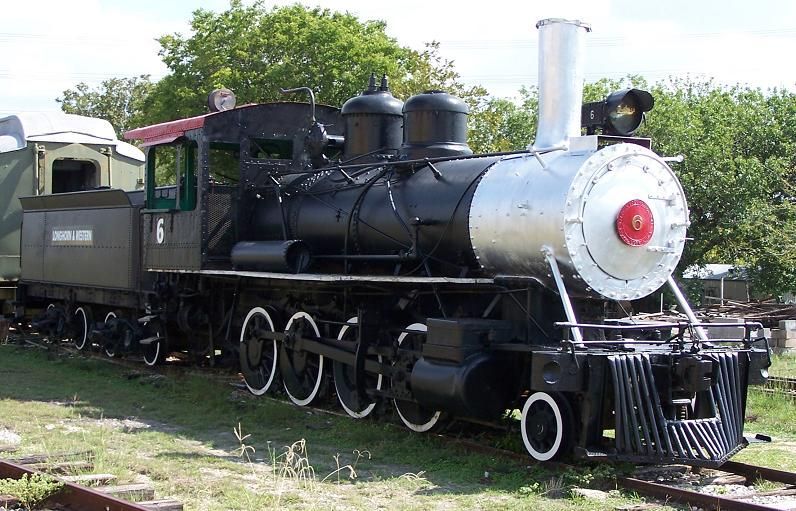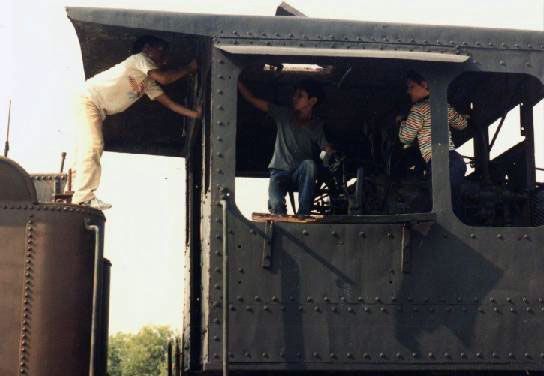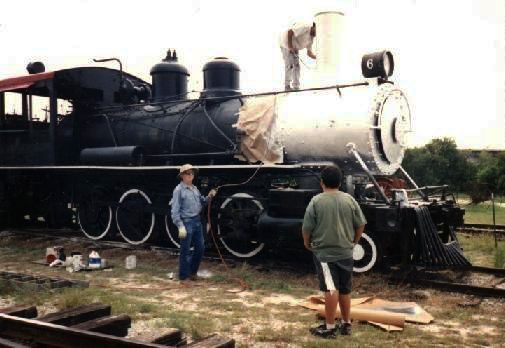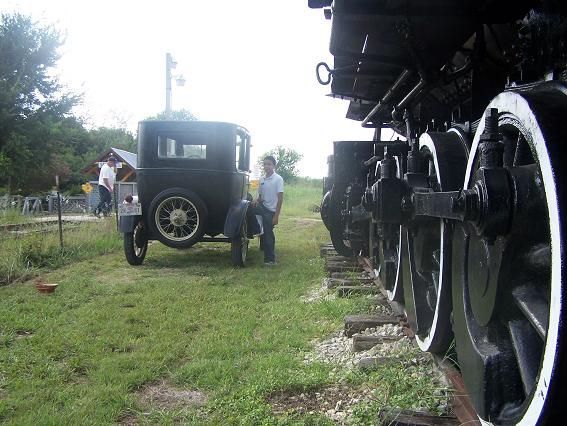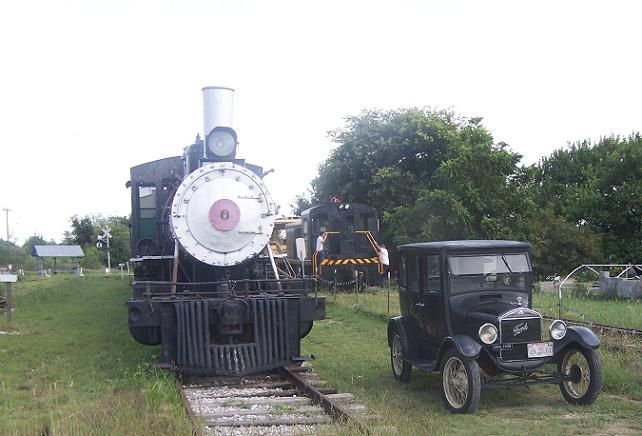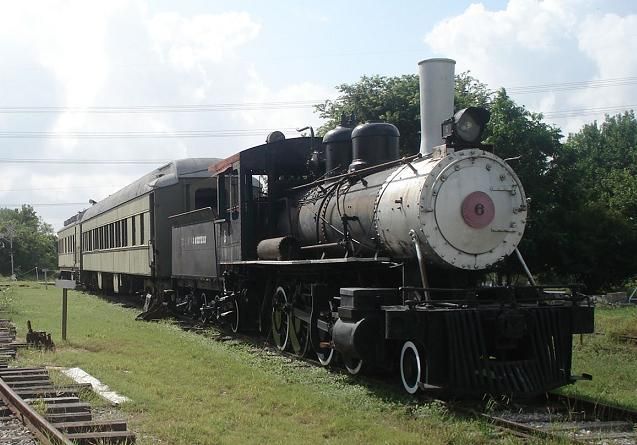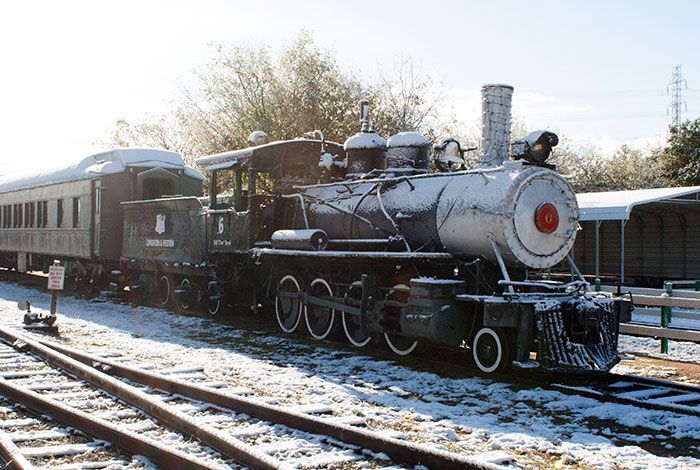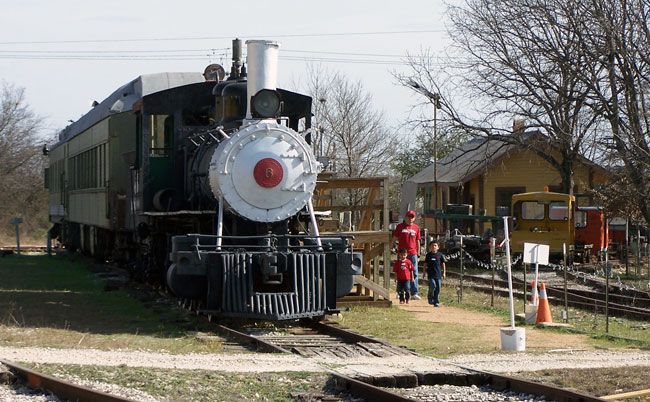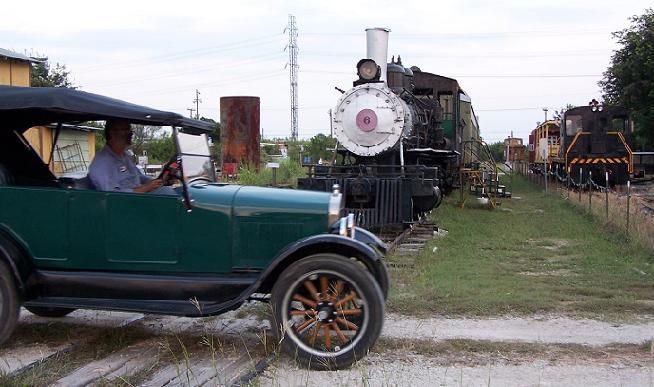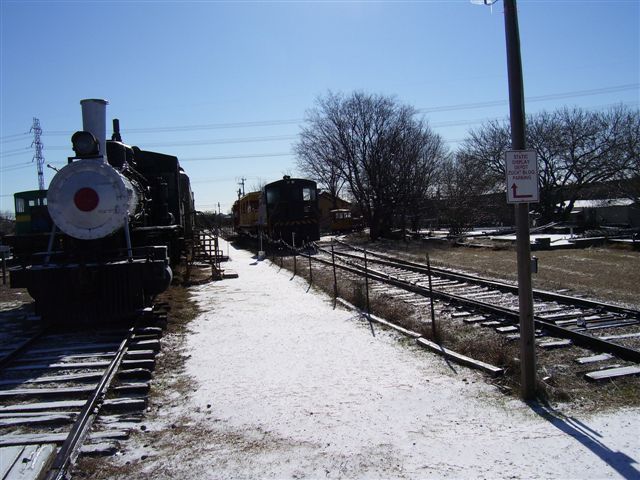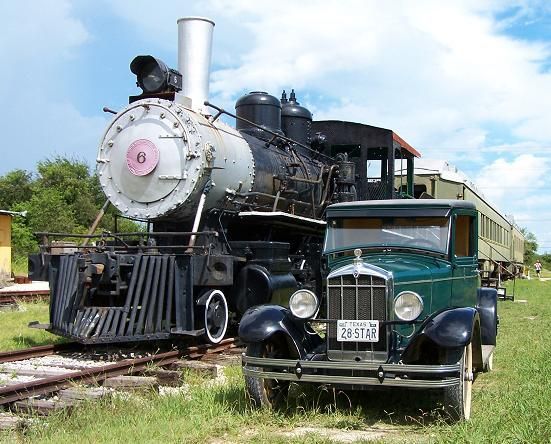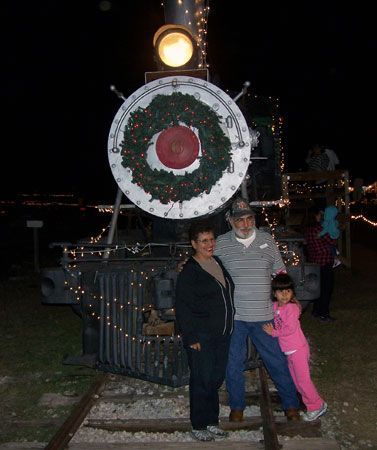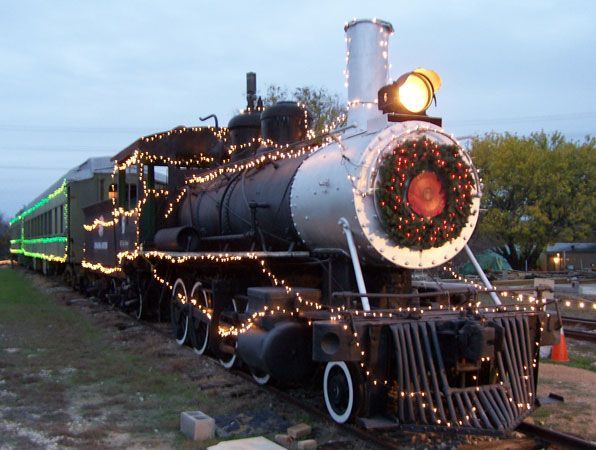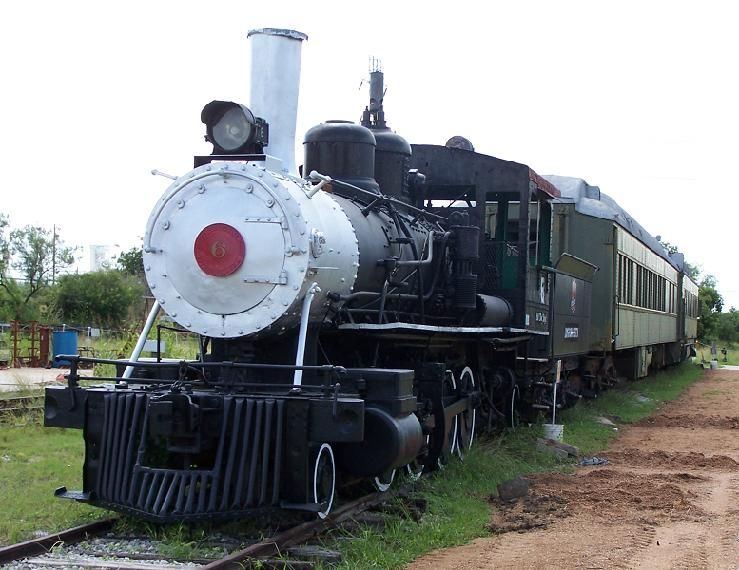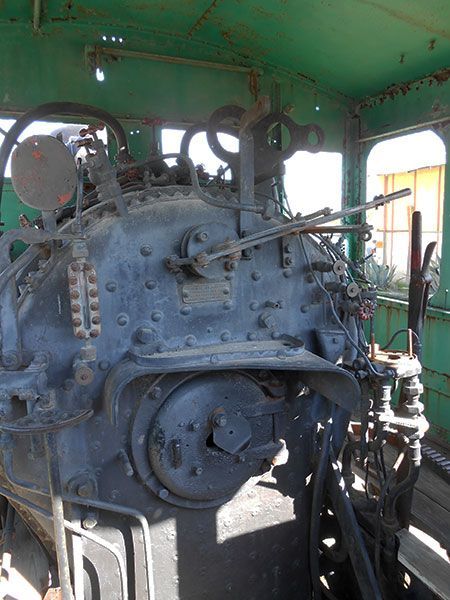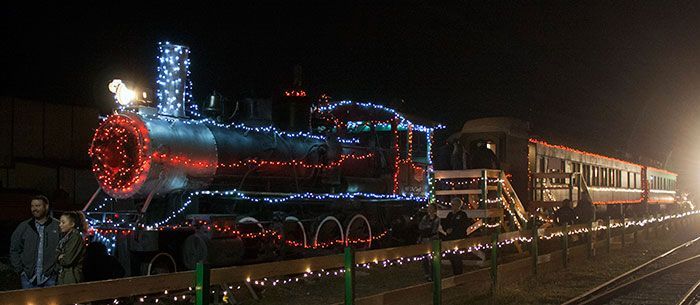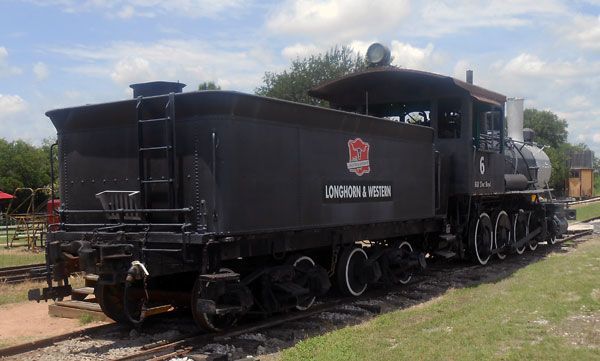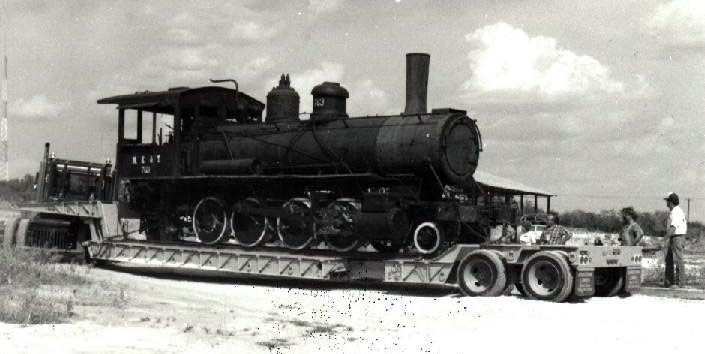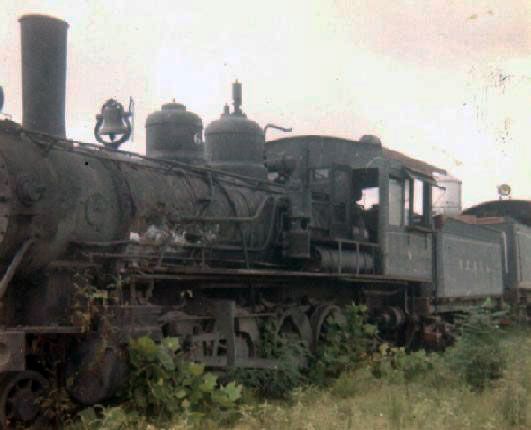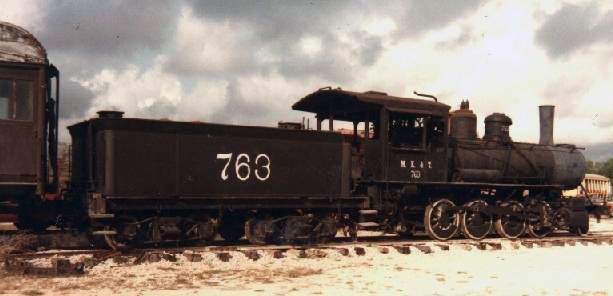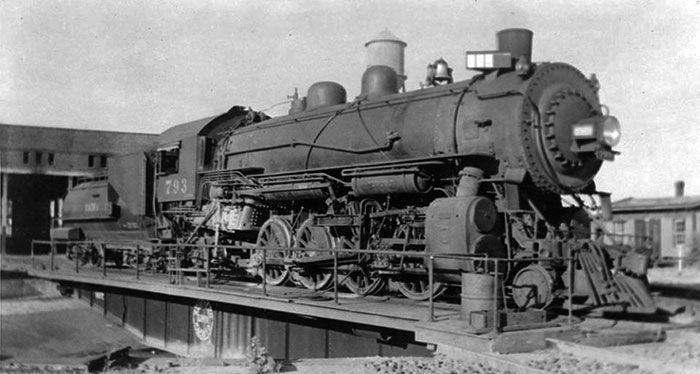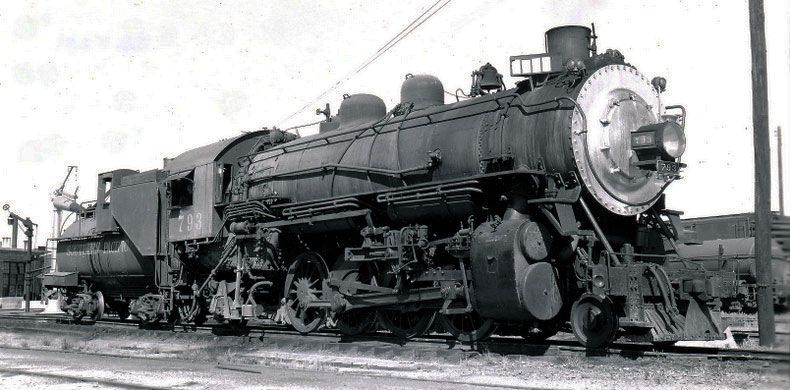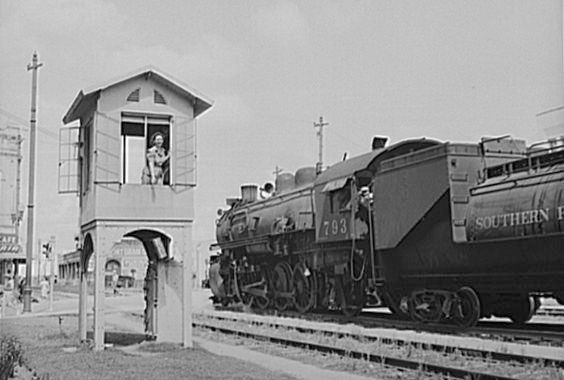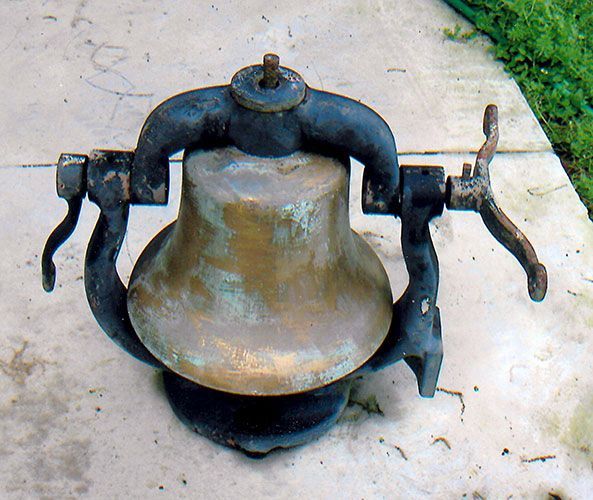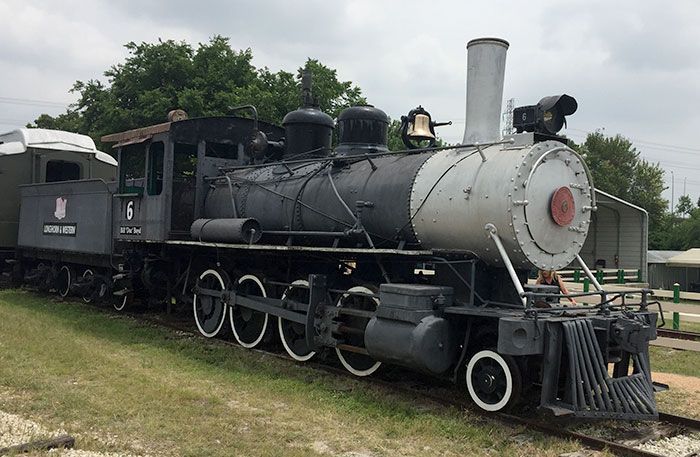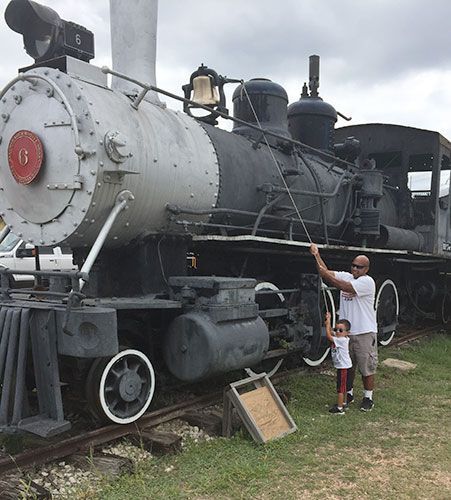1911 Baldwin 2-8-0 Steam Locomotive
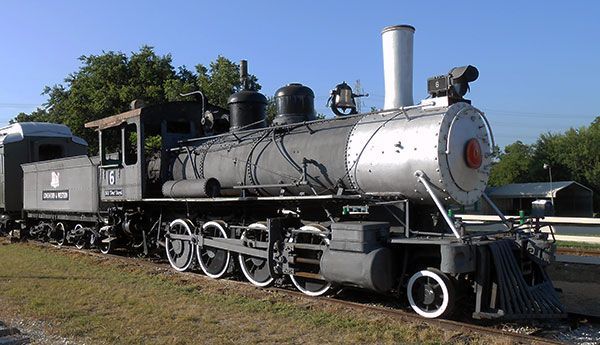
Technical Specifications
#6 was built in 1911 for the C.W. Carter & Brothers Company who operated it on the Moscow Camden & St. Augustine Railroad.
Builder's plate number - 35816
Converted from wood to oil burning in 1929
Light weight - 110,000 lbs
Operating weight - 155,000 lbs. (93,000 - locomotive, 62,000 - tender)
2 - 8 - 0 wheel arrangement, with 44" drivers, 24" front truck wheels.
Two pistons, 16" diameter, 24" stroke. Operating pressure - 170 lbs psi.
The boiler is 54" in diameter, with 116 2 inch diameter, 12 foot long tubes
#6 has 20,000 lbs of tractive effort
The tender holds 3,000 gallons of water and 1,200 gallons of fuel
Last operated by MC&SA RR in 1956
Acquired by TTM in 1970
1971 - Transported to Georgetown, Texas, for rebuild and possible use on a tourist railroad, which never materialized.
Finally arrived at TTM on 8/4/1984
8/5/1984 - the MK&T numbers put on #6 for a movie were painted over
"#6" is a Baldwin 2-8-0 steam locomotive acquired new by the Moscow, Camden & San Augustine Railroad owned by the W.T. Carter & Brother company to to move fresh cut lumber in East Texas. The company was known to add a passenger car at the rear of the train during the summer to provide rides for locals and tourists. It cost fifty cents to travel the seven miles of the MC & SA. #6 stayed in operation until the mid 1950s. An enthusiast color movie - scroll down for captured images - shows it to be in very poor condition at the end of its service life. It was found, with other abandoned MC & SA steam locomotives, by museum volunteers in the early 1970s. Hopes that it could be returned to active service proved unfounded - its boiler and fire box are too far gone. It would require a frame-up restoration which would cost well over $10 million. But its second life as a static display is not without its value. It is seen and photographed by tens of thousands of people every year.
Presented here are just two of the many original Baldwin Locomotive Company documents the museum acquired along with the locomotives in 1971. It seems that the locomotive was returned to Baldwin around 1929, to be converted from being wood fired to oil fired. The documents state #6 was built in January 1911 for the company. More documents in our bulging files are from the Interstate Commerce Commission in Washington D.C. requesting updates on the locomotive for their files since the originals, filed in 1911 were missing. In addition, all subsequent work, modifications and repairs were voluminously documented. The engine was relatively trouble free, according to the inspection reports.
The towns of Moscow and Camden, being so small, are hard to find on most maps. They are 6.8 miles apart in Polk County, southwest of Lufkin, near to Livingstone, not too far from the Louisiana border. The railroad never actually made it to the town of St. Augustine. The railroad was wholly owned by the W.T. Carter & Brother Company, and existed to serve its logging operations out there in the lush red dirt woodlands. Southern Pacific had a depot in Moscow and freight would be transferred between the two railroads. Although the service was entirely a freight operation, a passenger car would be added for the benefit of tourists, and the revenue accruing from such sightseers. The M.C. & S.A. is still in business to this day, and it still offers limited passenger service, but, of course it uses diesel electrics now to power its trains.
Locomotive #6 was built by the Baldwin Locomotive Company in 1910. It is a Consolidation class engine with a 2-8-0 wheel configuration. It was given its number by it's one previous owner, the C.W. Carter & Brothers Lumber Company. It was operated on the Moscow, Camden & St. Augustine railroad. The company changed ownership and name but #6 soldiered on. These captured images are from "American Steam, A Vanishing Era, Steam Shortlines of the South". It is still available on VCR for around $5.00 plus shipping. Use Google to find a vendor. The section of the DVD concerning #6 shows it in operation on the Moscow, Camden and St. Augustine Railroad in the 1960s, not long before it was retired from operations. You see the engineer greasing the side rods, and both crew members, the brakeman and the engineer turning the locomotive on a human powered turn table. The movie is a blend of several visits to the line, from summer to winter. On some occasions the train had a mixed freight consist, with a combination passenger and freight car at the rear. The movie commentary notes #6 was leaking steam from multiple places, a sure sign that its maintenance was poor at the end of its working life.
The locomotive was acquired from the US Plywood-Champion Paper Company, of Camden, East Texas, the latest incarnation of the long established paper and wood by-products company. The locomotive was the "best of the bunch" of quite a few old, abandoned locomotives in their possession. It weighs 55 tons and was last operated by the M C & SA RR in 1953. It has exceptionally low "chassis" miles for a steam locomotive - only 90,000. It's riveted boiler construction is illegal in Bexar County, following a catastrophic boiler explosion in 1925, so the whole boiler and ancillary arrangements would have to be re-made in order to make it run, legally, again.
Though it was acquired by the museum as far back as 1971, #6 did not arrive at the museum until 1984. It spent the intervening years in Georgetown, Texas. The agreement, it seems was that the folks up there would rebuild the locomotive and many San Antonio volunteers trekked up to Georgetown to help out. The facilities in Georgetown were better than what was available at the still new museum. The plans are vague and lost in the mists of time, so suffice it to say that the folks up there did not do much with it, the agreement expired and the locomotive was returned to its owners, namely the museum.
During it's time in Georgetown it was featured in a movie. It was "dressed up" as the M.K. & T. 736, for its role. To enable it to produce smoke while it was moving, tires were burned in the fire box. The smoke was expelled through the stack due to normal convection as the wheels turned, producing a most realistic effect. A hidden diesel at the rear of the train provided the real motivation. No one at the museum seems to know what the movie was called. It was probably a forgettable western. As it was retired in 1956, some of the images included here may be stills from the film, judging by at least one car in the background and the higher quality of the pictures. #6 was immediately returned to its correct identity upon its arrival at TTM. It has been painted several times since, due to the powerful nature of the sun in Texas. It has been installed as the head piece of our static display. It also is a very prominent feature of our Christmas Extravaganza.
#6 display takes a terrible beating from the Texas sun. Ideally the entire static display would be placed under a shed to protect it and reduce the temperature inside the cars. While a number of plans have been floated, funds to make it happen have yet to be accumulated.
By 2009 #6 was in need of being repainted yet again. TTM volunteer John Denny took on the task - by himself! Never underestimate the capacity of a committed individual! Despite the record breaking, heat of 2009, John accomplished a minor miracle. As mentioned, our long term goal is to build a train shed over the entire length of the static display. This will go a long way to protect it from the elements.
#6 gains a "new" bell, May 2017
Somehow or other, when #6 arrived at TTM, after spending quite sometime in Georgetown after being acquired from the Moscow, Camden & St. Augustine 'bone-yard,' it no longer had its bell. Things had not gone well in Georgetown - the folks there soon realized that restoring #6 was beyond their capabilities and budget. (The cost to get it running again is quite staggering no matter what.) TTM was happy to finally get it and the loss of the bell was chalked up to circumstances beyond anyone's control.
Over the years, the cost of a correct replacement bell became in and of itself an extraordinarily high expense. So imagine our surprise and delight when we were contacted by a gentleman from Louisiana who was looking for a place to donate a bell from a Southern Pacific locomotive scrapped in 1954. And not just any locomotive by an ALCO built Mikado 2-8-2 which was used exclusively by the Southern Pacific in their T&NO (Texas & New Orleans) region. It was #793. If this sounds familiar it's because the SP donated its sister locomotive, #793, to the City of San Antonio, and another in the same series, #786. to the City of Austin. But the SP 794 was not so lucky. Built in 1916 it was scrapped in 1954, after 38 years of service, mainly hauling freight.
As was quite common at the time, the railroad donated the bell to an SP employee for use at a church. Hector Labbe Sr, who worked in a clerical position in Louisiana, applied for and received the bell and he in turn gave it to the Immaculate Conception Mission church in Lower bayou Dularge. This was an ancillary church within a large parish but as time went by, the structure began to show its age and its parishioners acquired cars that allowed them to go to the main church, so the structure was let go, and the bell returned to the Labbe family, in 1988. Mr. Labbe's daughter had the bell in a similar tower to that at the old church until she passed and it fell to Hector Labbe Jr to find a new home for the bell. But, lo and behold, no one seemed to want it, except as scrap and that just didn't seem right to Hector. So he kept going.

Good detective work and some clues on the bell itself enabled him to determine which locomotive it had some from. At one point he ended up in contact with the huge California State Railroad Museum in Sacramento. And they suggested he contact the Texas Transportation Museum in San Antonio. Our response was entirely different from everybody else. We helped Hector find pictures of the SP 793. We suggested some museum's closer to where he lived but none of them responded positively, if at all, so, quite enthusiastically, we agreed to accept the bell as a donation. And, as of May 2017, it is now back where it should be, atop a fine old steam locomotive of similar vintage to the SP 793, and another old freight hauler to boot!

